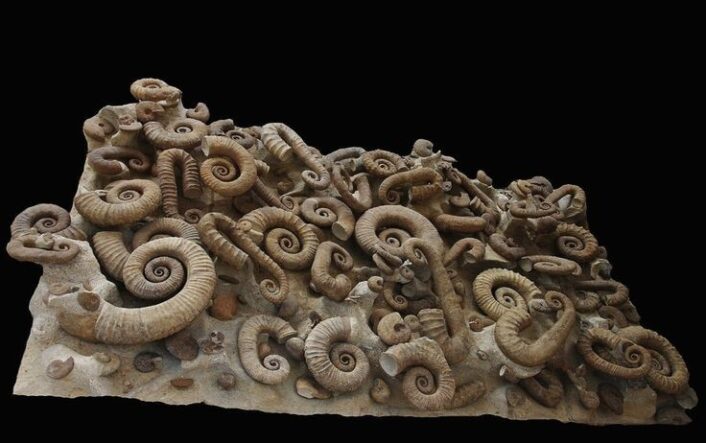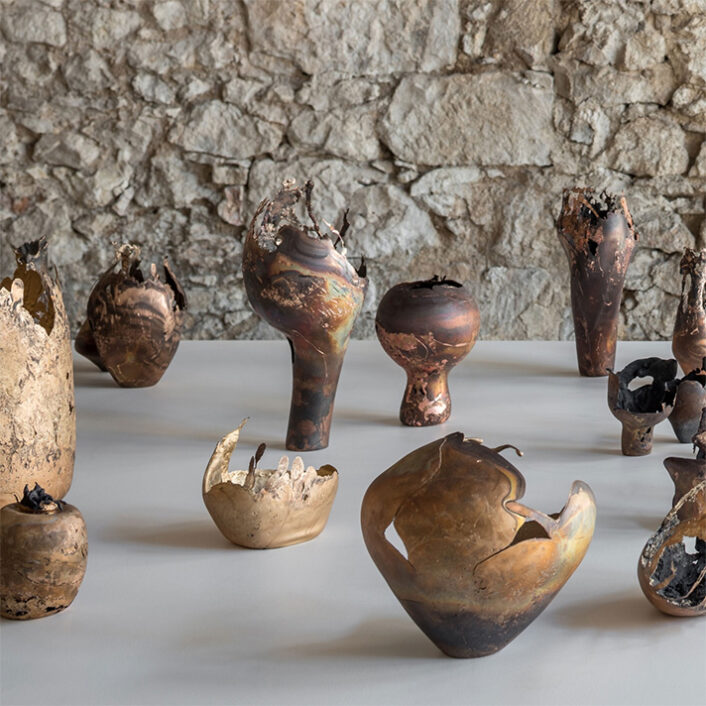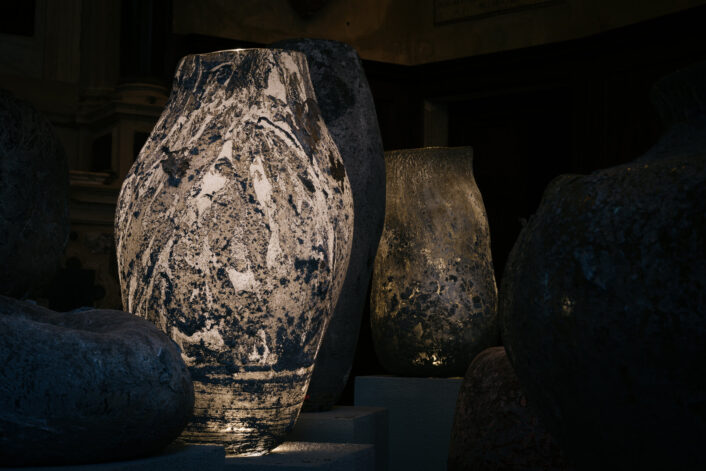Design
Casey Zablocki

Casey Zablocki and his dog, Ingrid, inside his Missoula, Montana studio.
Image courtesy of: Architectural Digest, photographed by: Kayla McCormick
For Casey Zablocki, decay and erosion are a source of inspiration for the unique sculptures and vessels he creates. The ceramic artist first became infatuated with wood-fired pottery as an undergraduate student. Zablocki was drawn (courtesy of Architectural Digest) “to the richly textured, at times crystallized surfaces he could achieve using the age-old method.”
Zablocki honed his skills by apprenticing in South Korea for Hun Chung, a ceramic master, prior to finding himself at The Clay Studio of Missoula. The not-for-profit studio was founded by a group of University of Montana alumni who felt it was important to establish a comprehensive ceramic center where community classes could be held and where ceramicists could have studio space and access to equipment. Zablocki quickly found a home at the studio where he still rents a “cave-like” anagama kiln.
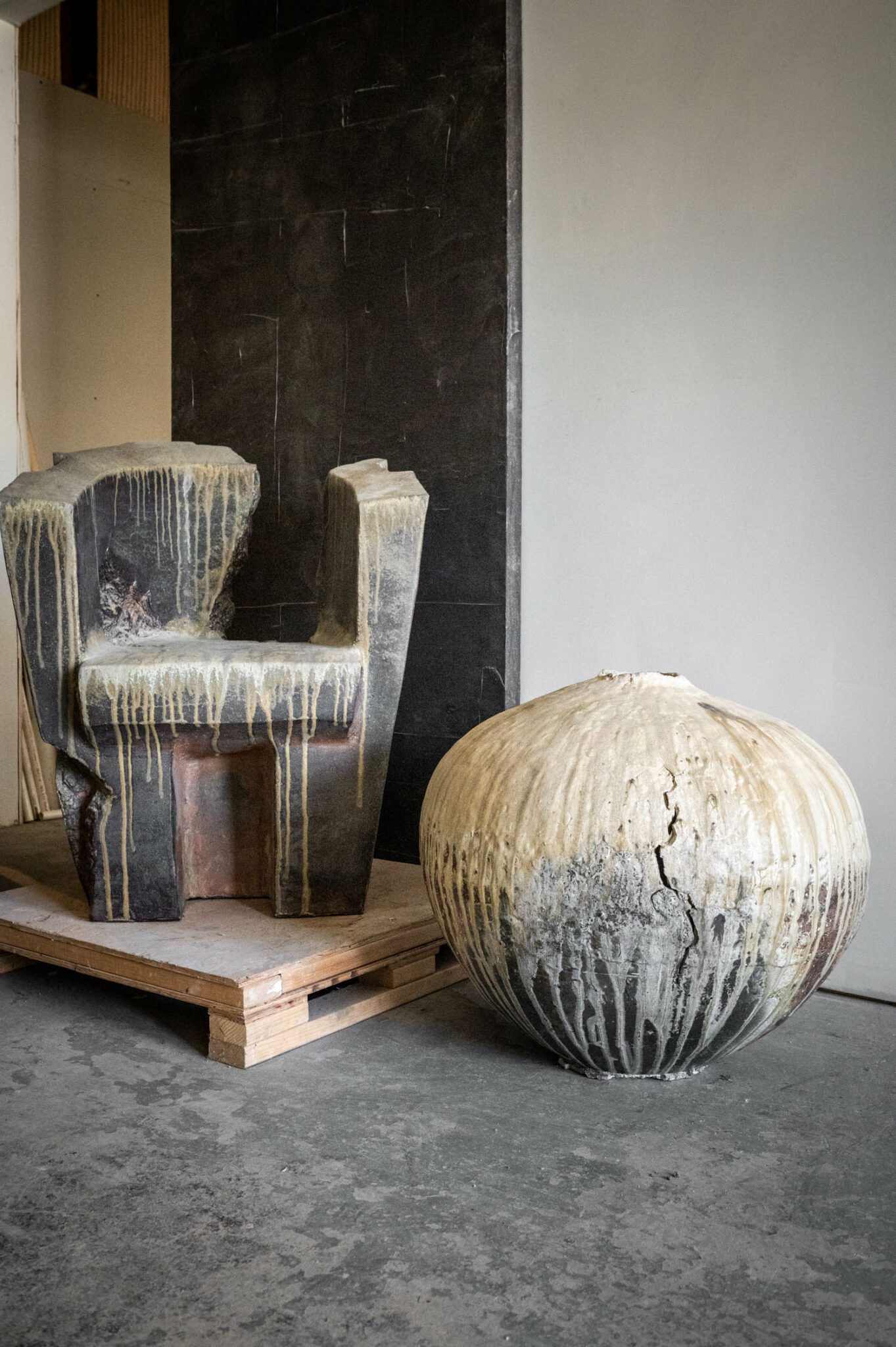
Two pieces from last year’s solo exhibition at New York City’s Guild Gallery, titled “Modern Relics.”
Image courtesy of: Interior Design, photographed by: Kayla McCormick
Zablocki’s East Asian-style kiln is where he produces his ceramic sculptures and furniture pieces. Part of the reason his brutalist-inspired work is so unique is because of the special type of wood-fire kiln that he uses. Specifically, this anagama kiln dates back roughy 1,500 years to when Japanese artisans would make earthenware in ovens that reached up to 2,300 degrees Fahrenheit. The pieces would bake in that immense heat for days upon days.
The work is extremely physical… for eight days, 24 hours a day, Zablocki fires his pieces. He employs a big shovel to move coals around in order to create different color variations. Once he lets the kiln cool, Zablocki builds crystals on top of the glaze. Rather than a clear, shiny glaze, the ceramicist produces a matte glaze with crystals.
For Zablocki, it’s almost like Christmas morning when he finally opens the kiln and sees what happened during the process. As the ceramicist explains it (courtesy of Interior Design) “I never really know what’s going on inside the kiln, or what’s going to come out until we open the kiln and hope that it cooperates with me. Think of a little dance or a relationship in which both parties have to trust each other.”
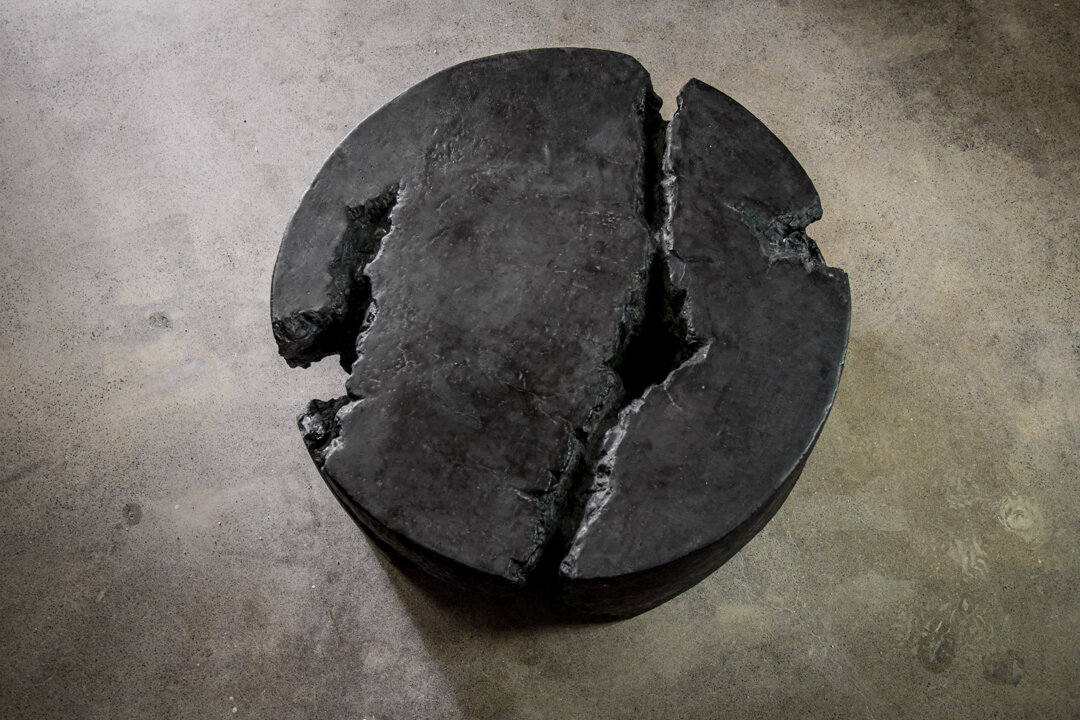
Coffee Table from the 53W53 Collection.
Image courtesy of: Zablocki Ceramics
Zablocki says he is inspired by the “modern world,” yet he attempts to design with traditions in mind. He always creates in a way that portrays the feeling of being “buried, sunken, and even destroyed.” Referencing the past and the present, Zablocki’s specific sculpting methods bring forth the beauty of aging in a world that is in constant search for young, new, and fresh.
The heavy influence from brutalist architecture remains ever-present in every single one of Zablocki’s unique pieces. His special artistic language has, no doubt, pushed the boundaries of ceramics. The archaic-looking sculptures he creates all have eroded textures and antique appearances.
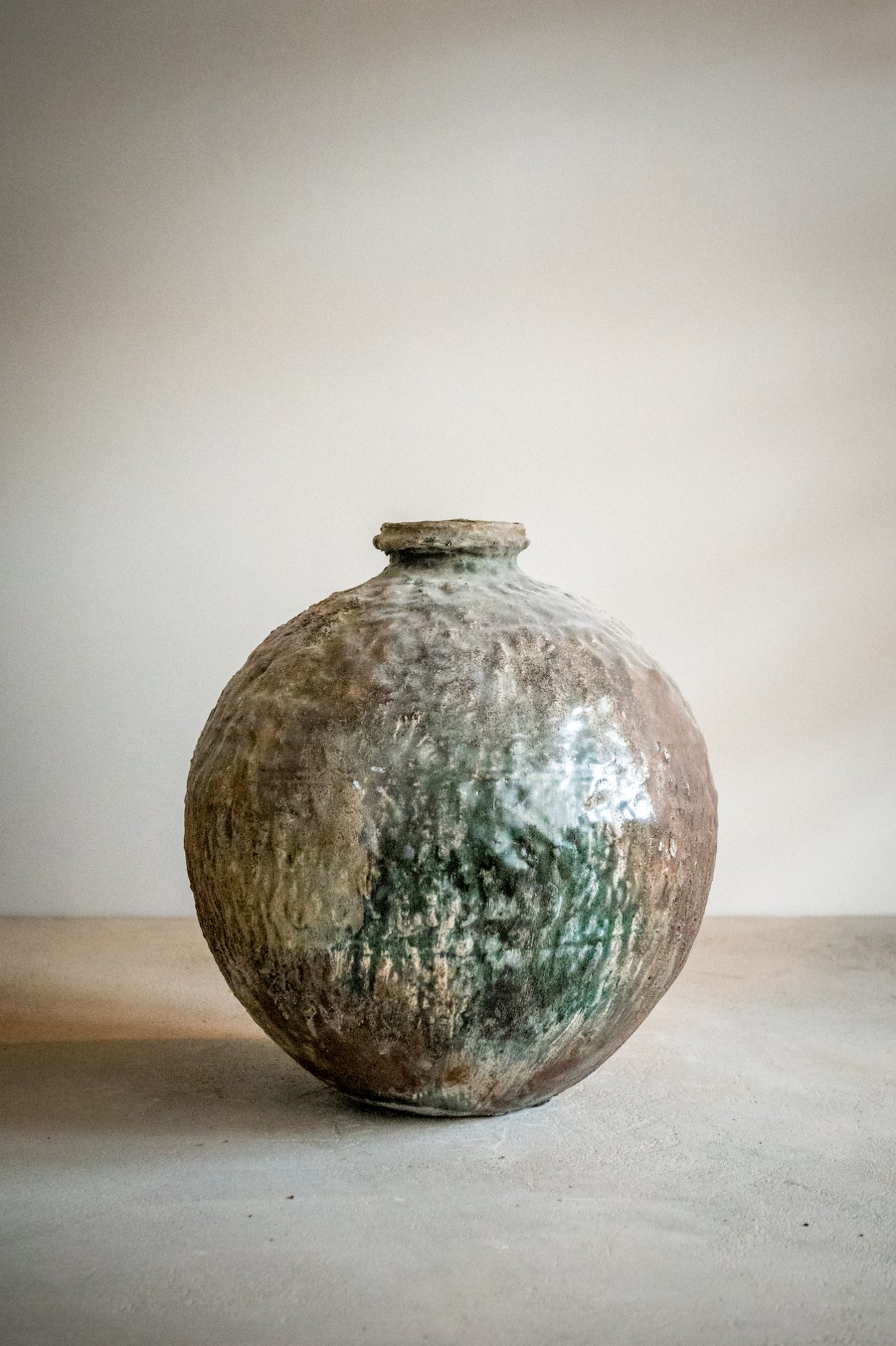
Bestla. Zablocki masterfully plays with the illusion of drip glaze on his otherwise smooth-surfaced works. This is all possible thanks to his unique use of wood ash.
Image courtesy of: Surface Magazine
Each firing presents a chance to create something new; it is the combination of different temperatures, object placement within the kiln, and wood ash that affects the end-result. For example, Zablocki uses ten cords of wood from two types of wood: cottonwood and fir. The high level of potassium in cottonwood makes it ideal for glazing, while fir is perfect for coal beds because it is more dense. The selections are a result of what is native to Montana… there is no local hardwood in the state.
Contrary to how it may look, Zablocki does not use glaze. What might look like a glaze on his pieces is actually “all wood ash from the fire being pulled through the kiln, landing on my work, and melting at a high, high heat.” The rough surfaces appear distinctive as they are covered with fingerprints and minute details that exemplify the one-of-a-kind facades.
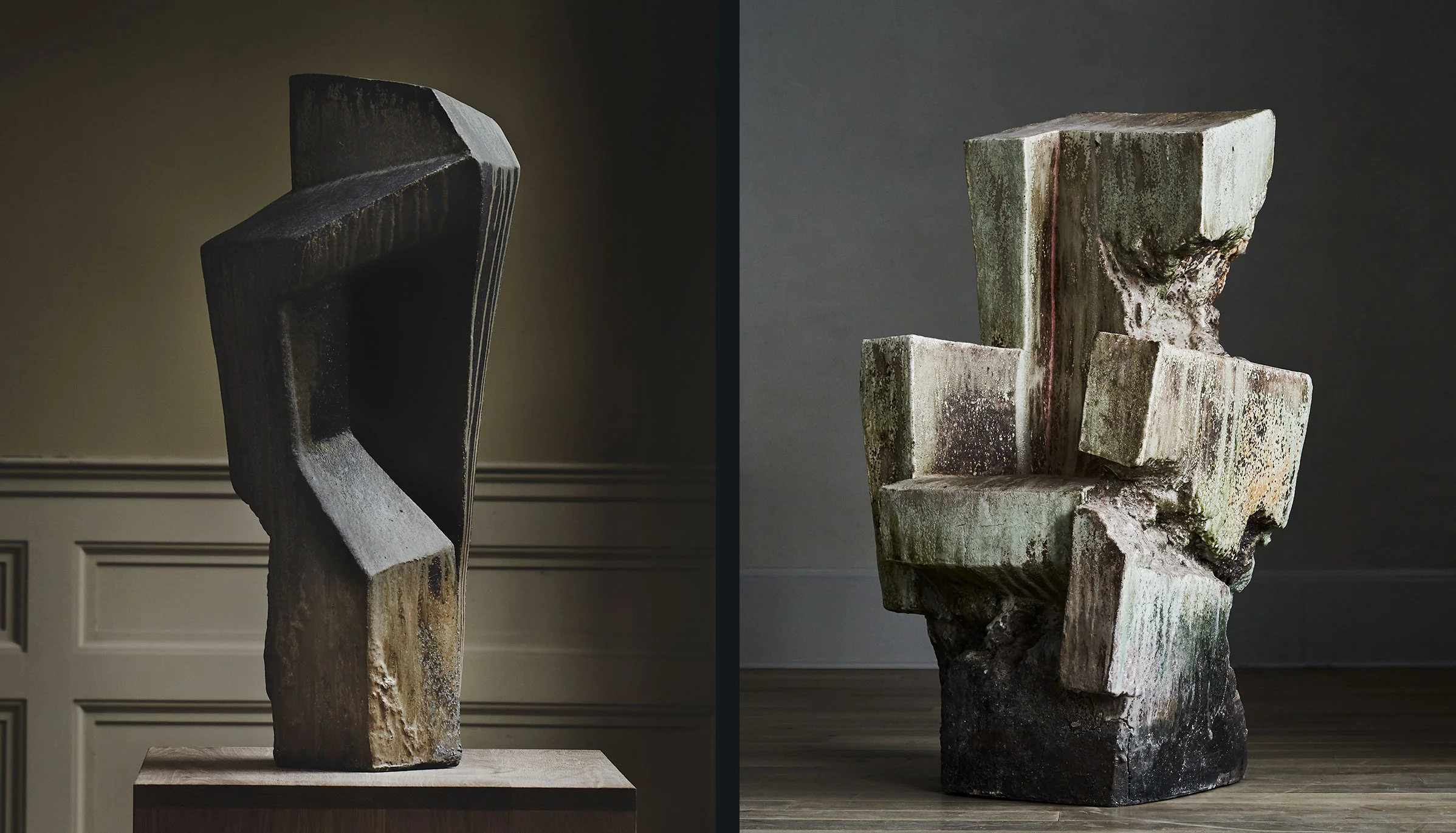
A chair from Zablocki’s September 2022 RW Guild exhibition.
Image courtesy of: RW Guild
Last fall, Zablocki presented a solo exhibition (his first) at New York City’s RW Guild. Titled “Modern Relics,” the design exhibition included 66 works produced over the past ten years. Among the pieces were large-scale sculptures, functional furniture designs, and small-scale vessels.
Zablocki’s pieces are artistic and scientific in nature… the commonality is that they all portray the artist’s fascination with decay. Courtesy of RW Guild, the ceramicist was quoted as saying, “The journey of my work is what I prize the most.” What a fabulous way to create!
